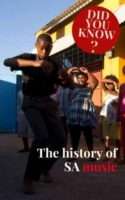Who remembers when they first heard the song sister Betina by Mgarimbe? The song is a beloved anthem and part of many childhood memories. We can’t talk about the impact and the history of South Africa’s music without highlighting it. It wasn’t only the lyrics that made everyone fall in love with the song, it was the beat, the dance and the overall December vibe it brought out of everyone. That’s the beauty of our music, it has become a part of the experience of being a South African.
Where it all started
According to Study.com South African music reflects a complex history of African and Western cultures, and of conflict and perseverance. Study.com explains that in the 1600s when the Dutch colonised South Africa they brought slaves from other parts of Africa to South Africa to work their farms and plantations.
The Dutch formed instrumental bands like the one they were familiar with from Europe, using brass and wind instruments. Then European missionaries also arrived in South Africa, bringing Western Christian religion and musical styles like choral singing with them. By the 1800s all these were mixing more into traditional South African musical styles, because of segregation of Blacks from white suburbs to townships with no resources, they ended up blending their original sound with the western sounds, which formed most SA music.
Around the 1920s, in the townships around Johannesburg, a style of music developed called marabi, which mixed African sounds from cultures like the Xhosa and Zulu with Western jazz. Marabi is played on a keyboard-like piano and has a variety of bass beats. It grew so much and influenced musical styles that came after it, like kwela and mbaqanga.
Popular Music in SA today
We can’t start off the list without Kwaito, a sound that made growing up in the townships seem so cool. It made dancing a vibe, it made many young people proud of being from ekasi, and Kwaito is the term “Lok’shin culture,” It showed black South Africans that they were the blueprint.
Kwaito – began in the 1990s. According to SAHistory it’s a mixture of a number of different rhythms from marabi of the 1920s, kwela of the 1950s, mbaqanga/maskhandi of the hostel dwellers, bubblegum music of the 80’s, and Imibongo (African praise poetry). Icons like Miriam Makeba and Brenda Fassie influenced Kwaito.
In an interview the founding father of the sound Arthur Mafokate said, “Lyrically we were inspired by people like Brenda Fassie and Chicco Twala, Fassie and Twala were the rising stars of the older “Bubblegum” disco music. They were representing us and talking about what was happening in the ghettos, and they spoke in a mixture of English, Zulu, Sesotho and Iscamtho (slang).”
SAHistory breaks down the meaning of Kwaito; it’s from the Afrikaans word kwaai, which translates to “angry” in English. In slang, negative words or phrases often acquired a positive connotation or “cool” status. The language of Kwaito is Isicamtho, South African township slang. Isicamtho is a modern version of tsotsitaal – a Tsotsi is a thug or a gangster, and taal is an Afrikaans term for language.
Mbaqanga – an article by BaslerAfrika highlights that this genre was created from Kwela, Marabi, and African and American Jazz. Well-known groups from the music are Mahlathini and the Mahotella Queens. Mbaqanga is the Zulu word for dumpling and was originally used by traditional populists to derogatively characterise Mbaqanga, but the artists took ownership of the word. The main elements include gospel piano chords, acoustic guitars, double basses, saxophones, drums and a groove with a light rhythm. To this day Mbaqanga is still popular, with a merging trend of mixing it with sounds from Gqom, hip-hop and even amapiano.
Gqom – If you are a taxi daily user, you will know very well the noise this type of music makes. Which is where its name comes from because gqom is the noise made by the beats. Accoeding to ZAlebs iGqom was conceived in the backrooms of then up-and-coming house producers in Durban and found an audience in people who lived in the townships and were takers of taxis daily. It sounds rough but it’s one of the best December music to listen to in South Africa. Gqom is a lifestyle, like Kwaito, it’s not just about the music, it quickly became part of the township culture.
Amapiano – Like all SA new styles of music, amapiano were born from Kwaito, According to Preforming Arts, Amapiano emerged from the townships of South Africa, particularly Pretoria. Amapiano has a slow deep groove, South African-inspired percussion, repetitive, raw vocal style and jazzy samples (from soulful piano to flute). Amapiano unlike Gqom is not about the noise. When dancing to it, the aim is not to sweat. It’s soothing, you don’t need to perform but just let the music move you. Amapiano is the music of today especially for the younger generation (ama2000).
Music’s impact on SA culture
SA is a country with a history that has divided and unfortunately, we are still living through the after effects of colonisation, racism and apartheid. Music became the one thing we had in common whether you are black or white. For Black people music became a way of living because for a long time they didn’t have anything to call their own. It healed, it bought happiness and created a culture of being proud of who and what little they had.
SA music is beautiful, if you haven’t yet, take the time to listen to icons like Brenda Fassie, Mandoza, Zola 7, Mafikizolo and Lebo Mathosa just to name a few. It’s nostalgic, it’s rich in history and understanding the struggles our beautiful country has gone through.
***
Have you heard about the king of trap? Read here to find out more.
Tell us: What is your favourite genre of SA music and why?


